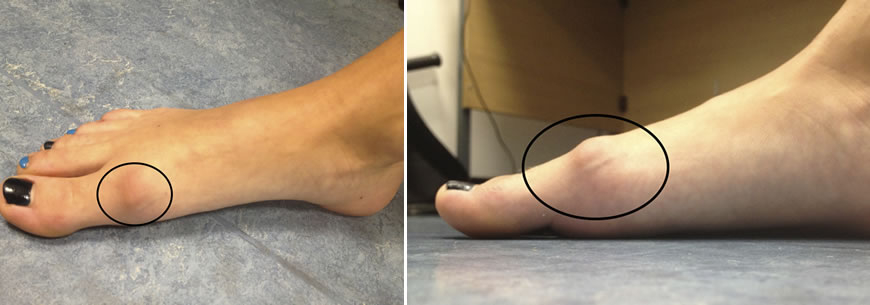in Foot and Ankle Surgery and Reconstruction
The term hallux rigidus refers to the condition where your big toe, specifically at the metatarsaophalangeal (MTP) joint becomes arthritic. “Hallux” refers to the big toe and “rigidus” means rigid or stiff.

 In many patients no definite cause is found. It can affect both feet or one alone. Sometimes arthritis (wear and tear) in the joint can be attributed to repetitive strain or injury of the MTP joint. People with gout or more widespread form of arthritis such as rheumatoid can be affected.
In many patients no definite cause is found. It can affect both feet or one alone. Sometimes arthritis (wear and tear) in the joint can be attributed to repetitive strain or injury of the MTP joint. People with gout or more widespread form of arthritis such as rheumatoid can be affected.
The main reason people seek medical attention is because of pain around the big toe joint. There can be a noticeable bump, often on the top of the joint and patients can actually get quite significant stiffness of the joint especially on push-off or dorsiflexion (toe bending upwards). Patients can complain they have difficulty even on walking or playing sports.
The clinical features as discussed above in addition to typical X-Ray findings in the big toe make the diagnosis of Hallux Rigidus.
People often “live” with the symptoms for many years and then finally seek medical attention. If you decide not to see your doctor, the problem will tend to progress, usually slowly. Stiffness will increase. The condition can be treated at any stage however early surgery can preserve the joint whereas later surgery may require joint fusion.

The treatment is operative or non-operative.
Non-operative treatment aims to reduce the symptoms by reducing the pain on joint movement when walking. This can be through specially made insoles to relieve the pressure in the big toe joint or by wearing stiff or rocker-bottom shoes, more supportive for your toe ensuring adequate space in the shoe for your toe. This is not a curative option, but may be suitable for some patients. In addition, patients may find taking pain-killers or anti-inflammatory tablets beneficial, provided there are no other medical reasons they cannot take them.
In moderate cases the joint can still be tidied or alternatively a joint replacement can be performed (similar concept to hip or knee replacement). In more severe cases the joint can be replaced or alternatively a joint fusion procedure can be done. Another surgical option available but not often performed is rather than replacing the joint or fusing it, part of the arthritic joint can be removed altogether but not replaced so a small gap is left to allow some movement. As said this is an option usually in the much less active population but not often used.
This is a permanent joining or stiffening between arthritic bones of your toe. The bones are held together with metal screws/plates that act to stabilise the bones tightly together while your body naturally allows the bones to combine and fuse together.
Although the joint is permanently stiffened in a fusion the toe is fixed in such a position so as to allow patients to maintain a very active lifestyle, even jogging and running. Patients can still wear reasonable heels if desired. It is therefore a good option for some people. Joint replacement is good for some people, e.g. ladies who wish to wear a higher heel. The joint replacement operation is designed to certainly maintain your range of movement or even improve it.
Many patients are simply seeking advice on managing a problem. In mild cases modifying shoes or activities can prove a successful therapy however if non-operative measures have failed to improve symptoms then surgery is indicated, but the timing of the surgery can be arranged to suit your needs. As said earlier, even if the condition worsens, surgery is always an option, but the exact surgical procedure performed may differ slightly from the original surgery possible and may be more technically challenging.